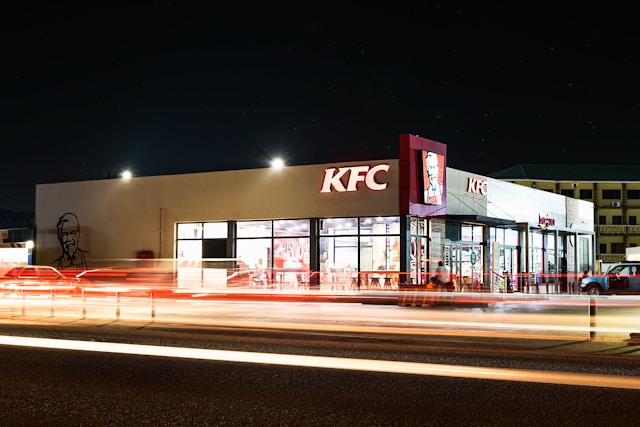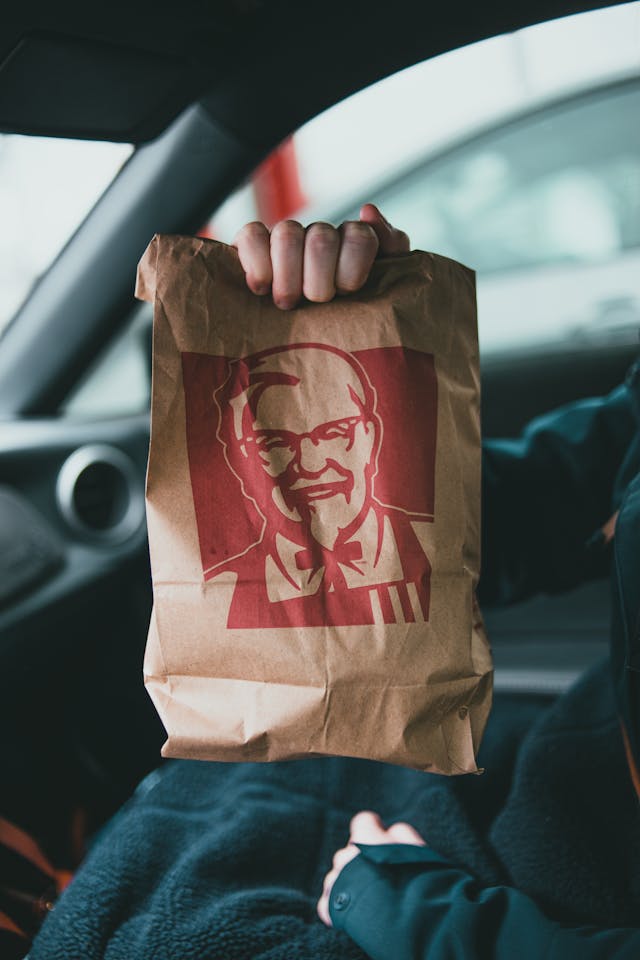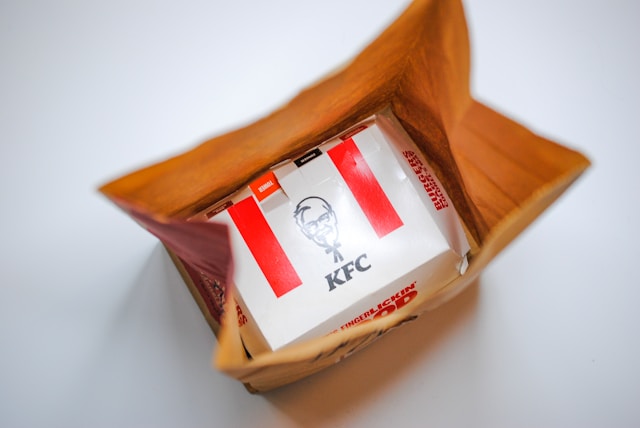Kentucky Fried Chicken has a presence in over 150 countries and is one of the world’s most popular fast-food franchises, with instantly recognizable branding. The company’s marketing strategy is a masterclass in consistency, adaptation, and innovation. By exploring KFC’s approach, marketing professionals can gain valuable insights into building and sustaining a powerful brand.
The Foundation: Consistent Brand Identity
KFC’s brand identity revolves around a few core elements: the iconic Colonel Sanders, the secret recipe of 11 herbs and spices, and the tagline “Finger Lickin’ Good.” These elements have been steadfastly maintained over decades, providing a consistent brand image that consumers recognize and trust. Colonel Sanders, originally the founder, has been immortalized as a symbol of quality and tradition. This consistency in branding creates a sense of familiarity and reliability, which is crucial for customer loyalty.
Adaptation to Local Markets
While KFC maintains a consistent global brand identity, it skillfully adapts to local markets, demonstrating cultural sensitivity and relevance. In Japan, KFC is synonymous with Christmas, a tradition that began in the 1970s. The “Kentucky for Christmas” campaign transformed KFC into a festive dining choice, with families pre-ordering special Christmas meals.
In India, KFC introduced a vegetarian menu to cater to a significant segment of the population that prefers vegetarian food. This included products like the Veg Zinger and Paneer Zinger, ensuring that the brand remained inclusive and accessible.

Leveraging Digital Marketing and Social Media
KFC has embraced digital marketing and social media to engage with a younger audience. Its social media strategy is particularly notable for its humor and willingness to take risks. For instance, the brand’s Twitter account follows only 11 people: five Spice Girls and six men named Herb, a clever nod to its secret recipe. This quirky strategy generated significant buzz and reinforced the brand’s playful persona.
Another example is KFC’s response to a chicken shortage in the UK in 2018. The company faced a public relations crisis when many outlets ran out of chicken due to a logistics issue. KFC’s response was a masterclass in crisis management. They issued a humorous apology in the form of an ad that rearranged their logo to spell “FCK” and admitted their mistake. This transparency and humor resonated with the public and turned a potential disaster into a positive brand moment.
Creative Advertising Campaigns
KFC’s advertising campaigns have been both creative and effective, often leveraging nostalgia and humor. One notable campaign was the “Fried Chicken USA” campaign, which featured a fictional Colonel Sanders running for President. This campaign capitalized on the election season in the United States and created a lot of media buzz.
In another campaign, KFC introduced the “Extra Crispy Colonel” played by actor George Hamilton, highlighting their Extra Crispy Chicken. By using a well-known personality to embody the Colonel in a new way, KFC managed to refresh the brand while maintaining its core identity.

Innovations in Product Offerings
KFC’s ability to innovate extends to its menu offerings as well. The brand frequently introduces limited-time products that generate excitement and draw in customers. For example, the Double Down, a sandwich with chicken fillets instead of bread, created significant media buzz and became a viral sensation.
In China, KFC adapted its menu to include traditional Chinese dishes alongside its standard offerings. This strategic move not only catered to local tastes but also helped KFC integrate into the local food culture, enhancing its acceptance and popularity.
Use of Technology and Data
KFC has effectively utilized technology and data to enhance its customer experience and marketing efforts. The brand’s mobile app allows customers to place orders, earn rewards, and receive personalized offers. By leveraging data analytics, KFC can tailor promotions and recommendations to individual preferences, increasing customer satisfaction and loyalty.
Furthermore, KFC has experimented with innovative technologies such as facial recognition. In China, KFC partnered with Baidu to launch a concept store where customers could place orders using facial recognition technology. This not only enhanced the ordering process but also positioned KFC as a forward-thinking brand.
Community Engagement and Corporate Social Responsibility
KFC’s marketing strategy also includes community engagement and corporate social responsibility (CSR) initiatives. The brand has launched various campaigns to support communities and promote social causes. For example, the “Add Hope” campaign in South Africa aims to combat hunger by donating meals to those in need.
During the COVID-19 pandemic, KFC contributed to relief efforts by providing meals to healthcare workers and first responders. Such initiatives not only demonstrate KFC’s commitment to social responsibility but also enhance its brand image as a caring and responsible corporate citizen.
Collaborations and Partnerships
Collaborations and partnerships have been another effective aspect of KFC’s marketing strategy. The brand has partnered with various companies and celebrities to create unique and engaging campaigns. For instance, KFC collaborated with Crocs to create limited-edition KFC-themed Crocs, which sold out almost immediately. This collaboration generated a significant amount of media coverage and social media buzz, showcasing KFC’s ability to stay relevant and trendy.

Emphasis on Quality and Transparency
In recent years, there has been a growing demand for transparency and quality in the food industry. KFC has responded to this by emphasizing the quality of its ingredients and its commitment to food safety. The brand has launched campaigns to educate consumers about its sourcing practices and the stringent quality controls it follows. This focus on transparency helps build trust and credibility with consumers, which is essential for long-term brand loyalty.
Lessons for Marketing Professionals
KFC’s marketing strategy offers several valuable lessons for marketing professionals:
- Consistency is Key: Maintaining a consistent brand identity over time helps build recognition and trust. KFC’s consistent use of Colonel Sanders and the “Finger Lickin’ Good” tagline are prime examples.
- Adapt to Local Markets: While a consistent global brand image is important, adapting to local tastes and cultures can enhance relevance and acceptance. KFC’s localization strategies in Japan, India, and China demonstrate this principle effectively.
- Embrace Humor and Creativity: Humorous and creative campaigns can generate significant buzz and engagement. KFC’s social media strategies and advertising campaigns often leverage humor to great effect.
- Innovate Continuously: Introducing new and exciting products can keep the brand fresh and draw in customers. KFC’s limited-time offerings and menu adaptations showcase its ability to innovate.
- Leverage Technology and Data: Using technology to enhance the customer experience and leveraging data for personalized marketing can boost customer satisfaction and loyalty.
- Engage with the Community: Corporate social responsibility initiatives and community engagement can enhance a brand’s image and demonstrate its commitment to social causes.
- Build Strategic Partnerships: Collaborations with other brands and celebrities can create unique marketing opportunities and generate buzz. KFC’s partnership with Crocs is a notable example.
KFC’s marketing strategy is a blend of consistency, creativity, adaptation, and innovation. By maintaining a strong brand identity while adapting to local markets, leveraging humor and creativity in campaigns, continuously innovating product offerings, utilizing technology and data, engaging with the community, and forming strategic partnerships, KFC has built a powerful and enduring brand. For marketing professionals, KFC’s approach provides a wealth of insights and inspiration for building successful marketing strategies.

